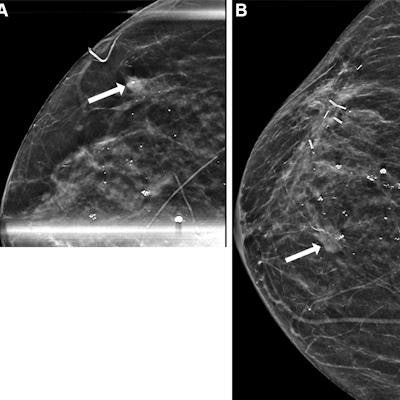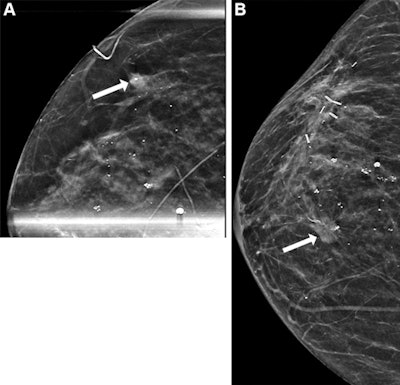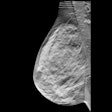
Nearly half of women treated for ductal carcinoma in situ (DCIS) do not consistently comply with imaging surveillance guidelines in the first five years after treatment, a Dutch study published January 10 in Radiology suggests.
Researchers led by Danalyn Byng, PhD, of the Netherlands Cancer Institute, also reported racial disparities in adherence rates, which they suggested emphasizes the need for measures to provide equitable approaches on the system level to imaging surveillance in women after DCIS treatment.
"Our findings highlight individual- and system-level opportunities to devise more targeted surveillance recommendations that reduce variability, maximize health outcomes, and ultimately increase the value of care," Byng and colleagues wrote.
Recommendations by some radiology and cancer societies state that women treated for DCIS or invasive breast cancer should have their first surveillance screening within six to 12 months after treatment. No end dates to this follow-up are specified. For women with additional breast cancer risk factors, guidelines suggest that routine mammography be supplemented with breast MRI or ultrasound.
Understanding how surveillance compliance impacts cancer outcomes and survival is important to understanding how useful surveillance guidelines are for women treated with DCIS and could inform personalized screening approaches, Byng's group wrote.
To explore post-DCIS treatment surveillance guideline adherence trends, the team conducted a study that included a cohort of 12,559 U.S. women treated at a total of 1,330 imaging facilities. The researchers categorized each period of imaging after treatment into 10 12-month time points, starting six months after DCIS diagnosis.
They found that surveillance uptake in the first period was 75%, but this decreased over time so that five years post-treatment only 52% of women underwent consistent annual surveillance.
 Mammography images show the timeline of diagnosis and surveillance screening for a 68-year-old woman with a history of benign excisional biopsy performed during breast cancer screening. (A) Diagnostic mammogram (synthetic mammography, craniocaudal view) shows new calcifications and an adjacent mass (arrow). Upon biopsy, an estrogen receptor-positive, progesterone receptor-positive, intermediate-grade DCIS is identified. At this time, the patient underwent lumpectomy and radiation therapy. (B) Surveillance mammogram (synthetic mammography, craniocaudal view) obtained three years after image A shows a new spiculated mass (arrow). Another biopsy revealed an estrogen receptor-positive, progesterone receptor-positive, human epidermal growth factor receptor 2-negative, intermediate-grade invasive ductal carcinoma. Images and caption courtesy of RSNA.
Mammography images show the timeline of diagnosis and surveillance screening for a 68-year-old woman with a history of benign excisional biopsy performed during breast cancer screening. (A) Diagnostic mammogram (synthetic mammography, craniocaudal view) shows new calcifications and an adjacent mass (arrow). Upon biopsy, an estrogen receptor-positive, progesterone receptor-positive, intermediate-grade DCIS is identified. At this time, the patient underwent lumpectomy and radiation therapy. (B) Surveillance mammogram (synthetic mammography, craniocaudal view) obtained three years after image A shows a new spiculated mass (arrow). Another biopsy revealed an estrogen receptor-positive, progesterone receptor-positive, human epidermal growth factor receptor 2-negative, intermediate-grade invasive ductal carcinoma. Images and caption courtesy of RSNA.Regarding racial differences, the researchers also reported that surveillance uptake was significantly lower in Black women (odds ratio [OR], 0.80) and Hispanic women (OR, 0.82) than in white women (for whom 1 was used as reference standard).
They wrote that these disparities are "particularly concerning," because they may reflect limited access to care and suggest that women in particular populations are at a disadvantage when it comes to post-DCIS treatment follow-up.
"The complicated landscape of inequitable access to care in the U.S. means that not all women diagnosed with DCIS will be able to adhere to recommended annual surveillance imaging," the authors added.




















